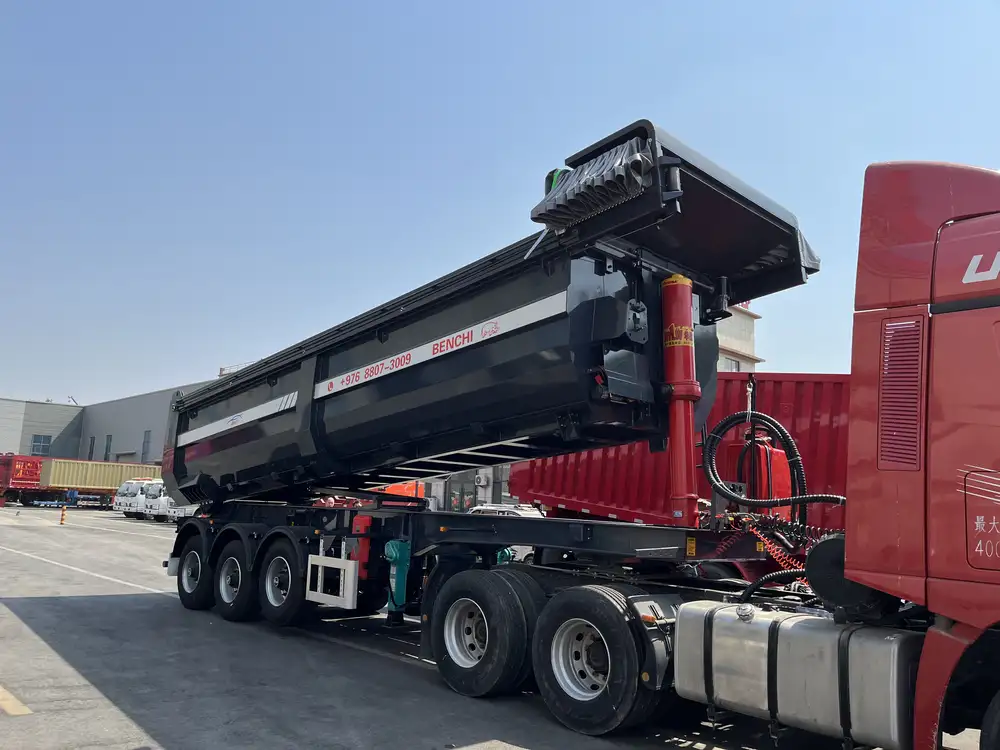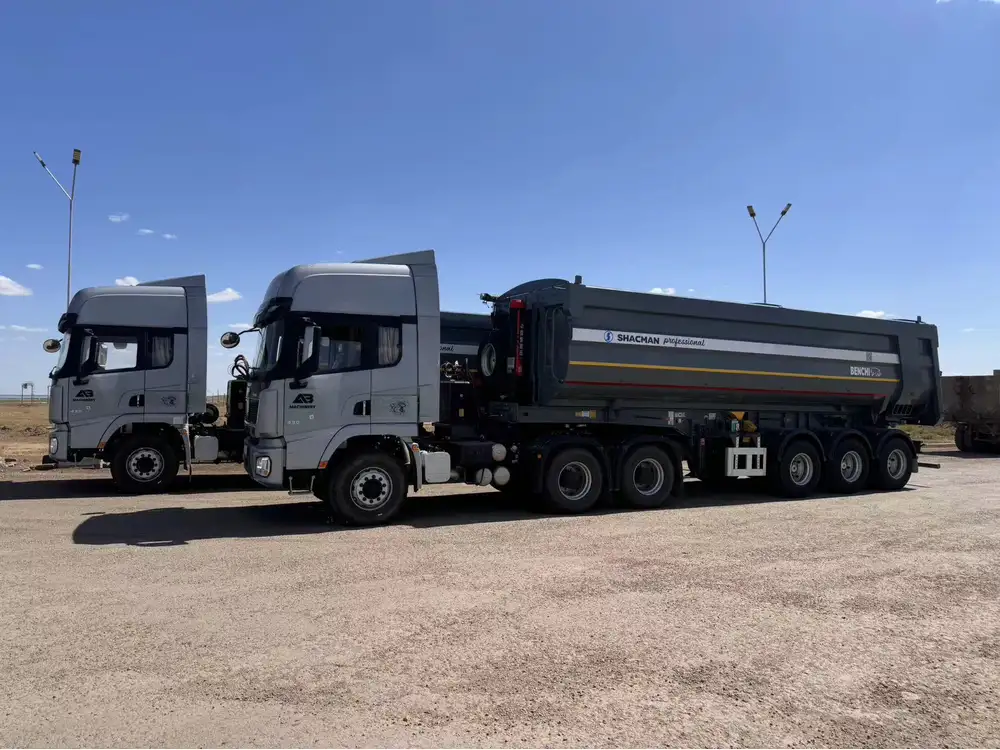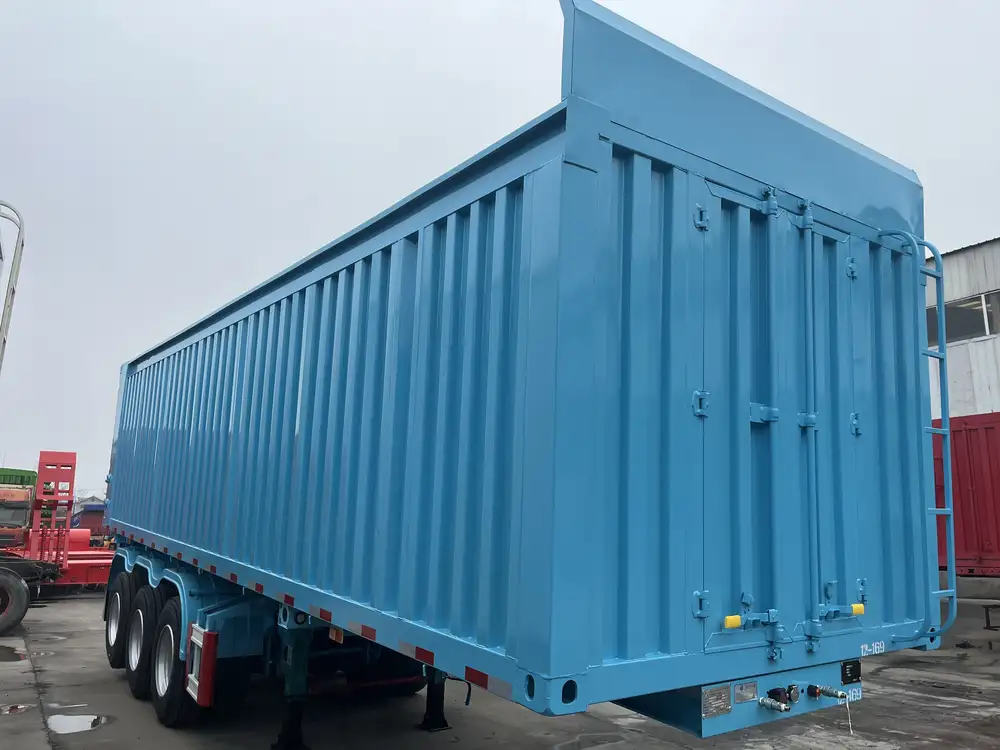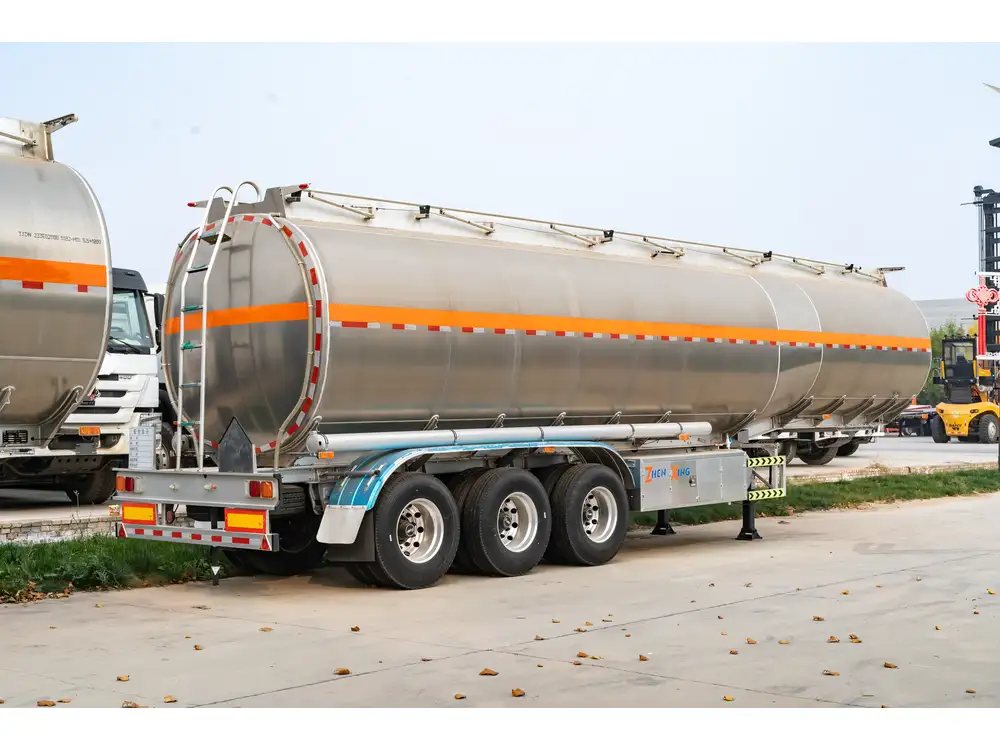End dump trailers are essential equipment for construction, mining, and transportation industries, allowing for efficient unloading of bulk materials. However, their operation is not without risks. This article addresses a pivotal question: “Can end dump trailers tip over?” By analyzing factors that contribute to stability, safety practices, and manufacturer recommendations, we aim to provide in-depth insights that enhance operational safety and efficiency.
The Mechanics of End Dump Trailers
To comprehend the risks associated with end dump trailers, it is crucial to understand their design and functionality:
Design Elements
- Frame Structure: Typically made of steel, end dump trailers feature a robust frame that supports loads during transportation and the unloading process.
- Hydraulic Lift System: This system enables the trailer to tip its contents, using hydraulic cylinders to elevate the front of the trailer.
- Tipping Mechanism: The design allows for a significant angle during unloading, which varies between models but can reach up to 50 degrees.

Load Distribution
- Weight Capacity: Most end dump trailers can carry loads ranging from 20,000 to 30,000 pounds, depending on their specifications and local regulations.
- Load Positioning: Proper loading and positioning of cargo can significantly impact the trailer’s stability during tipping.
Factors Contributing to Trailer Tip-Over
Various elements influence whether an end dump trailer might tip over during operation. Understanding these factors can help mitigate risks effectively.
1. Uneven Ground Surface
One of the most significant risks occurs when the trailer is positioned on an uneven surface. Factors include:
- Inclines: A slope can shift the center of gravity, making the trailer more prone to tipping.
- Soft or Unstable Soil: If the ground cannot support the weight, the trailer may sink, leading to instability.

2. Load Characteristics
The nature of the load being handled plays a crucial role:
- Type of Material: Certain materials (like sand or gravel) may shift abruptly during unloading.
- Weight Distribution: An unevenly distributed load can greatly increase the likelihood of the trailer tipping during the unloading process.
3. Trailer Maintenance and Condition
Regular maintenance is vital for safety:
- Hydraulic System Integrity: Leakages or failures in the hydraulic system can cause abrupt and uncontrolled tipping.
- Tire Condition: Worn or damaged tires can impair stability, especially in uneven terrains.
4. Operator Experience
The operator’s level of experience can greatly influence safety:
- Familiarity with Equipment: An inexperienced operator may not recognize unsafe conditions or the appropriate techniques for unloading.
- Adherence to Protocols: Follow-through on safety checklists and operational procedures hampers risks.

Safety Practices to Prevent Tip-Over
To minimize the risk of tip-overs, implementing effective safety practices is essential.
Pre-Operation Checks
| Item | Check Points |
|---|---|
| Hydraulic System | Inspect for leaks, connections, and functionality. |
| Tires | Ensure proper inflation and check for signs of wear or damage. |
| Load Weight and Type | Verify the load meets capacity limits and is evenly distributed. |
Proper Loading Techniques
- Distribute Weight Evenly: Place heavier materials at the center, avoiding overloading either side.
- Secure Loose Materials: Use tarps or nets to confine loose materials, preventing sudden shifts.

Operating Protocols
- Check Surface Conditions: Before unloading, assess the ground for stability and ensure it can support the trailer.
- Maintain a Safe Angle: Avoid excessive tipping angles, staying within manufacturer recommendations during unloading.
Training and Certification
Regularly train operators on:
- Safe Operating Procedures: Emphasizing awareness of conditions that could lead to tip-overs.
- Emergency Response: Education on how to react if the trailer becomes unstable.
Case Studies: End Dump Trailer Incidents
Analyzing real-world incidents can shed light on the consequences of improper use. Here are notable examples where end dump trailers have tipped over:

Case Study 1: Construction Site Incident
During a material unloading operation, an end dump trailer tipped over when the operator was unloading on a slope. The load shifted unexpectedly, leading to a loss of balance. Fortunately, the operator was unharmed, but the incident resulted in significant property damage.
Case Study 2: Highway Transportation Mishap
In a highway transport scenario, an end dump trailer experienced a tipping incident due to sudden gusts of wind while unloading. The operator had not secured the load properly, causing it to shift during discharge. This incident prompted the need for stricter regulations regarding unloading in adverse weather conditions.
Comparative Analysis: End Dump Trailers vs. Other Trailer Types
Understanding how end dump trailers compare with other trailer types regarding stability can provide useful insights:
| Aspect | End Dump Trailers | Side Dump Trailers | Standard Dump Trailers |
|---|---|---|---|
| Tipping Mechanism | End-tipping design | Side-tipping design | Rear-tipping design |
| Load Discharge | Gravity-assisted end discharge | Gravity-assisted side discharge | Gravity-assisted rear discharge |
| Stability Risks | Higher risk on inclines due to tip angle | Lower risk; wider base during discharge | Moderate risk; depends on loading |
| Best Use Cases | Loose materials like gravel, sand | Liquid, asphalt, or stackable items | General purpose for construction |

Manufacturer Recommendations for Safe Use
Leading manufacturers in the semi-trailer industry emphasize safety and stability during operations. Here are some universally applicable recommendations:
Load Management
- Strict Adherence to Weight Limits: Always comply with loading guidelines provided in the user manual.
- Regular Training: Continuous training sessions to keep operators informed on the latest safety measures.
Maintenance Protocols
- Scheduled Inspections: Routine checks on hydraulic systems, frame integrity, and tire conditions.
- Swift Repairs: Attend to any malfunctions immediately to prevent operational risks.

Innovative Technology
Increasingly, manufacturers are integrating technology into end dump trailers to enhance safety:
- Load Sensors: These devices alert operators when weight limits are exceeded.
- Stability Assist Systems: Advanced models may offer built-in systems to help maintain equilibrium during tipping.
Conclusion: Prioritizing Safety with End Dump Trailers
Understanding the risks associated with end dump trailers tipping over is essential for ensuring safety in operations. By implementing best practices such as regular maintenance, adhering to proper loading protocols, and investing in operator training, companies can significantly reduce the likelihood of accidents. Continual education and adherence to manufacturer guidelines will not only safeguard equipment but also protect personnel and enhance overall operations.
As we navigate through the complexities of trailer operation, let us commit to cultivating a safety-first culture—because awareness today leads to safer operations tomorrow.



